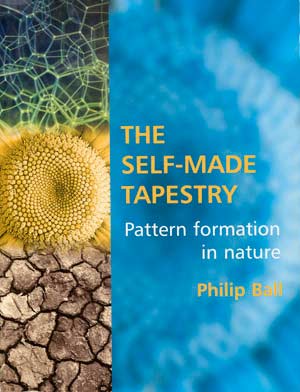 The Self-Made Tapestry: Pattern Formation in Nature by Philip Ball
The Self-Made Tapestry: Pattern Formation in Nature by Philip Ball
Why do similar patterns and forms appear in settings that seem to bear no relation to one another? The windblown ripples of desert sand follow a sinuous course that resembles the stripes of a zebra or a marine fish. We see the same architectural angles in the trellis-like shells of microscopic sea creatures as in the bubble walls of a foam. The forks of lightning mirror the branches of a river or a tree.
This book explains why there is more than coincidence in this conjunction of forms and structures. Nature commonly weaves its tapestry by self-organization, employing no master plan or blueprint but instead simple, local interactions between its component parts – whether they be grains of sand, diffusing molecules or living cells. And the products of self-organization are typically universal patterns: spirals, spots, stripes, branches, honeycombs.
BUY ON AMAZON
In non-technical language and with profuse illustrations, The Self-Made Tapestry tells how nature’s patterns are made.
BUY NOW on Amazon
Oxford University Press Hard Back 295 pages (1998) ISBN 0-19-850244-3
A complete rewrite and update of this book has now been published under the title ‘Reviews: NATURE’S PATTERNS: A Tapestry in Three Parts.
